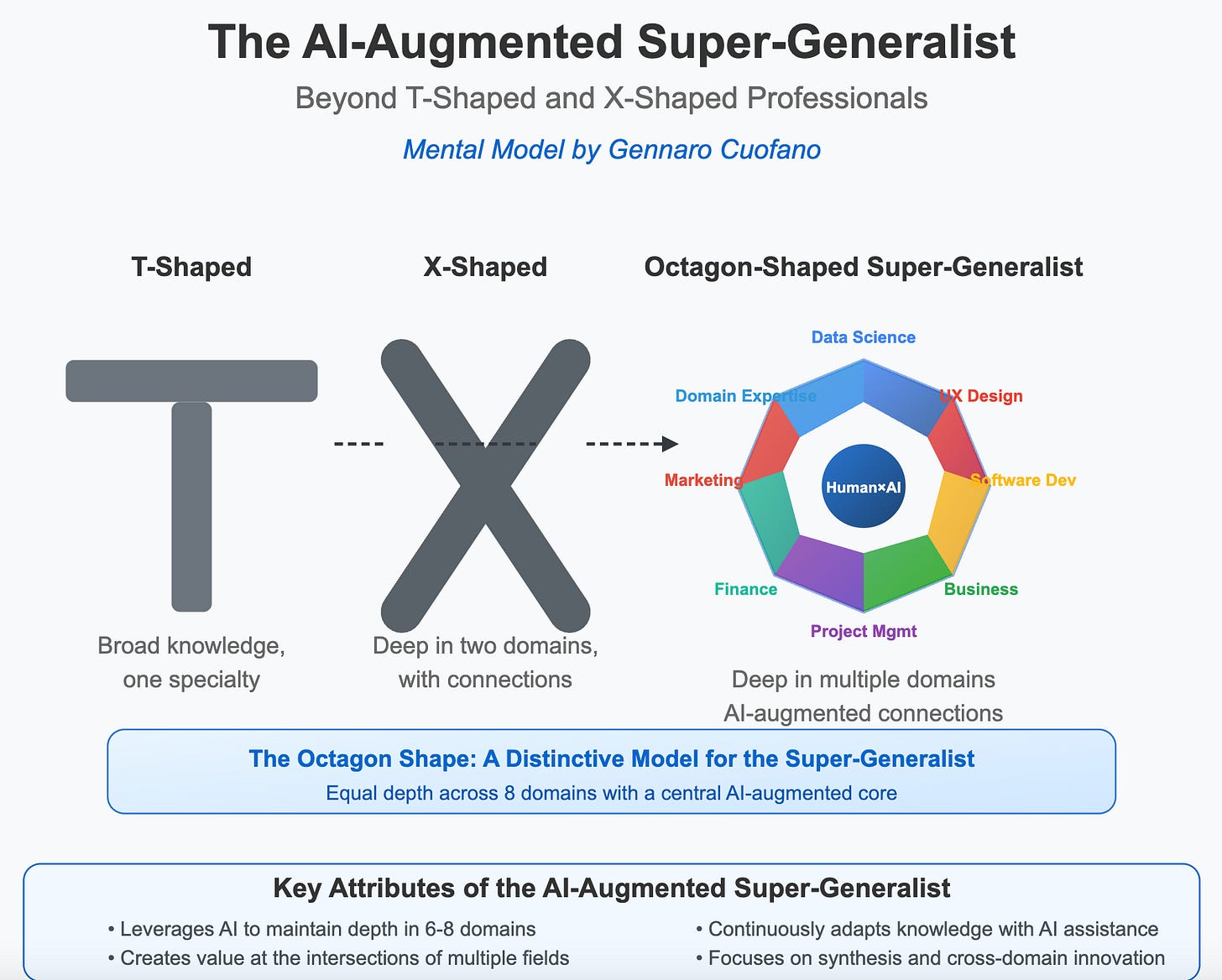The Super Generalist
The way we conceptualize professional expertise has evolved dramatically over time.
For decades, the business world has relied on mental models that categorize professionals based on their knowledge distribution.
As AI technologies transform how we work, we're witnessing the emergence of a new professional archetype that transcends previous limitations.
Let’s see how.
The T-Shaped Professional (First Generation)
The T-shaped professional, popularized in the early 1990s, describes someone with deep expertise in a single domain (the vertical bar of the T) and broad knowledge across related fields (the horizontal bar).
This model served industries well when specialization was the primary competitive advantage.
T-shaped professionals excel at solving domain-specific problems while having enough contextual knowledge to collaborate across adjacent disciplines.
This model dominated professional development strategies for decades, with companies seeking specialists who could communicate well enough with other departments.
The X-Shaped Professional (Second Generation)
As business complexity increased, the X-shaped professional emerged.
These individuals develop deep expertise in two distinct domains (the two diagonal lines of the X) and possess the unique ability to connect insights between these fields. X-shaped professionals are classic "boundary spanners" who thrive at the intersection of disciplines.
This model gained traction in fields requiring interdisciplinary thinking, such as product management (business + technology), UX design (psychology + visual design), or growth marketing (analytics + creative). X-shaped professionals excel at innovation by cross-pollinating ideas between their areas of expertise.



